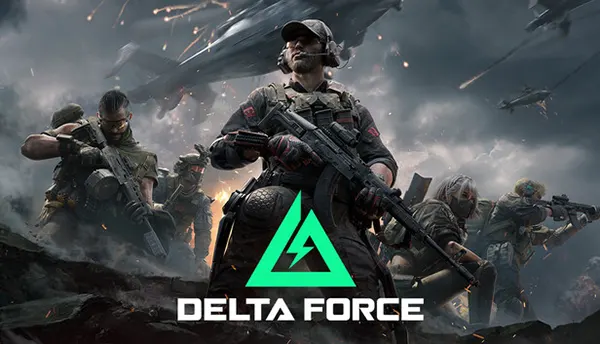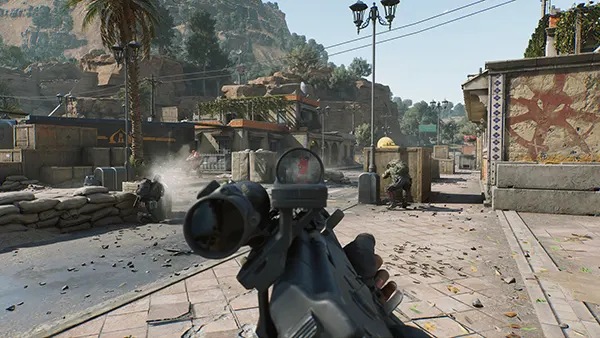
Delta Force — Mobile Tactical Shooter in Battlefield Style
Delta Force has re-emerged in 2025 as a mobile tactical shooter designed to capture the large-scale combat atmosphere of Battlefield while maintaining the flexibility and accessibility of handheld gaming. Built on modern technology and adapted for touch controls, it positions itself as a competitive alternative in the mobile shooter genre, offering large maps, authentic weapon mechanics, and strategic team play. Below is a comprehensive look at what makes this title stand out today.
Core Gameplay and Tactical Depth
Delta Force brings players into expansive battlefields with up to 64 participants per match, a rare feature for mobile shooters. The design philosophy mirrors the Battlefield series, focusing not only on reflex-driven gunfights but also on coordinated team strategies. Infantry, vehicles, and air units are seamlessly integrated, ensuring that matches feel dynamic and unpredictable.
The emphasis on tactical decision-making is evident in its squad system. Teams are encouraged to assign roles such as medic, engineer, or recon, ensuring balanced cooperation. Unlike many shooters that prioritise individual performance, Delta Force rewards group objectives and coordinated manoeuvres. This makes communication and planning essential to success.
Weapon customisation is another highlight. The system allows adjustments to attachments, optics, and ammunition types, offering players freedom to adapt their gear to the mission. This degree of personalisation elevates the tactical depth, ensuring replayability and strategic experimentation in every match.
Map Variety and Environment Design
The maps in Delta Force are deliberately vast, with terrain ranging from deserts and dense forests to urban combat zones. Each location has been designed with strategic choke points, flanking opportunities, and destructible environments. This allows battles to evolve organically rather than following predictable patterns.
Day–night cycles and dynamic weather conditions such as sandstorms or heavy rain influence visibility and strategy. A sniper’s advantage at long range may be compromised in fog, forcing teams to adjust tactics on the fly. This approach enhances immersion while reinforcing the tactical dimension of the game.
To maintain performance on mobile devices, the developers implemented scalable graphics settings. This ensures accessibility across a range of hardware, from mid-range smartphones to high-end gaming devices, without compromising the intensity of the experience.
Competitive Features and Esports Potential
In 2025, mobile esports continues to expand, and Delta Force is positioning itself within this ecosystem. Ranked modes provide structured competition, while seasonal events introduce limited-time challenges and cosmetic rewards. These systems maintain engagement while offering players long-term progression incentives.
The spectator mode and integrated replay system are tailored for content creators and professional competitions. Matches can be broadcast with multiple camera angles, providing esports organisers the tools to create engaging events for viewers. This highlights the developers’ intention to push Delta Force beyond casual gaming into the professional competitive scene.
Balanced gameplay remains a priority, with regular patches addressing weapon tuning and bug fixes. Transparency from the developers regarding these changes strengthens community trust, an essential factor for sustainable esports development.
Community and Player Interaction
Delta Force has already fostered an active community through forums, Discord servers, and in-game clans. Clan systems encourage structured teamwork, allowing groups of players to participate in coordinated tournaments or special missions. Social interaction is therefore not a side feature but a central aspect of the game’s identity.
Regular developer updates and Q&A sessions maintain an open dialogue between the creators and the players. This two-way communication helps prioritise feedback and ensures that the evolving content reflects the needs of the audience. In 2025, this approach has become a standard of trustworthiness within the gaming industry.
Cross-play support is another significant factor. Allowing mobile players to compete with those on PC broadens the competitive pool and enriches matchmaking. While balancing challenges exist, the system offers a unified gaming environment that enhances the game’s relevance in both casual and professional contexts.

Technological Advancements and Realism
The technical backbone of Delta Force leverages Unreal Engine 5 for mobile, enabling highly realistic visuals and physics-based mechanics. Unlike earlier mobile shooters, weapon recoil, bullet drop, and environmental effects are accurately simulated, aligning the experience with PC and console shooters.
Artificial intelligence plays a dual role: it powers smarter NPC opponents for training modes and assists in server optimisation, ensuring smooth gameplay in large battles. These AI-driven systems maintain stable frame rates while supporting complex map designs and real-time destruction features.
Audio design is another element where Delta Force excels. Directional sound systems allow players to identify threats based on footsteps, gunfire, or vehicles approaching. Combined with haptic feedback on modern smartphones, this provides a sensory depth uncommon in mobile shooters.
Future Prospects and Market Impact
As of 2025, Delta Force has firmly established itself as one of the most ambitious tactical shooters on mobile. Its combination of scale, realism, and competitive features sets a new standard in the genre. Analysts suggest that its hybrid of casual accessibility and professional-level depth will continue to expand its player base.
The long-term roadmap includes additional factions, new weapon classes, and seasonal narrative-driven campaigns. This ongoing support indicates the developers’ commitment to sustainability, avoiding the stagnation that often plagues mobile shooters after launch. With each update, the game aims to stay technologically relevant and strategically engaging.
In the broader mobile gaming market, Delta Force demonstrates how large-scale tactical experiences can be successfully adapted to smartphones. It redefines expectations for what is technically feasible and strategically rich in a mobile setting, potentially influencing future projects in the industry.
